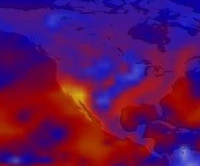Email:info@yasound.net
Contact:Mr.Ken
URL:www.yasound.net
Add:Puxin Hu North Road,TangXia Town ,Dongguan
City,GuangDong Province,China
- Author: admin
- Source: netword
- Date: 2014-11-28
- Views: 705Times

He was operating the array at 25W with a fan-cooled heat sink and LED substrate, both less than 35°C -- the junction was certainly less than 45°C. Yet, when he placed his hand near and then on top of the LED, he was nearly burned. What?
Naturally, Rodriguez repeated the process with a variety of LED arrays rated from 10W to 100W, in several forms, and he used as many individual tests. The results (which he documented on EDN, a sister site) were consistent. They led to multiple anomalies on the way to the smoking gun: High-power LEDs do generate IR. The heating he found in each case was substantial. Plastic melted, water boiled in seconds, and measurements soared during the experiments.
Rodriguez wrote in his EDN post that all materials exhibit varying degrees of radiant-energy-absorption properties that are difficult to quantify.
When the radiant energy is absorbed, it can be manifested as re-radiated IR. Is that heat really there before I put my hand over it? My hand absorbs some of that re-radiated IR and I perceive heat. Same for the evaporated water drop. But that is "real" heat. The revelation here that this heat has absolutely nothing to do with the PN-generated heat... heat that is typically transferred to a heat sink via conduction.
He asserts that LED companies don't have the equipment to perform adequate testing, nor do they perform the types of tests that led to this discovery. Before you ask, it's not the Stokes effect -- the process of converting blue light to white light via blue light absorption in a phosphor causing some heat. This is very real, and it would seem dangerous, depending on the application.
LEDs are new to the market, yet there have been recalls based on heat and fire problems. Rodriguez cited Lighting Science's recall of 554,000 LED bulbs in March because of a fire hazard.
He told us:
LEDs have putted along for over 35 yeas as a little component that provides tiny amounts of light as an indicator or light source in an optocoupler. As slightly larger chips were made and covered with phosphor to make white LEDs, there was no reason to change the thinking as millions of little white lights were sold. It's just in the past few years that chip on board arrays, rated up to 100W, were introduced. What LED manufacturers did not appreciate was that the physics of light and heat have some relationships that do funny things as power increases. Measuring these things is quite complicated. Companies like Fluke, with decades of experience measuring radiated thermal energy understand the issues, but in LED companies, the lack of experience, awareness, and understanding is rather astounding.
Rodriguez feels that this needs to be addressed soon and documented. Acrylic lenses may discolor, temperature measurements will be higher than advertised, and certain materials put in proximity to 100W COB LED surfaces may degrade for no apparent reason.
There is no need to change product approaches, but there is a need to be aware of light-generated radiant heat as a performance factor -- something that most people did not even know existed.






